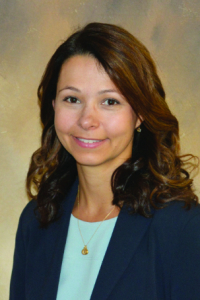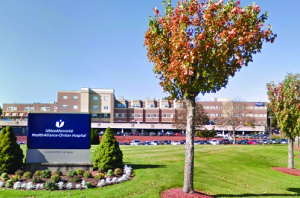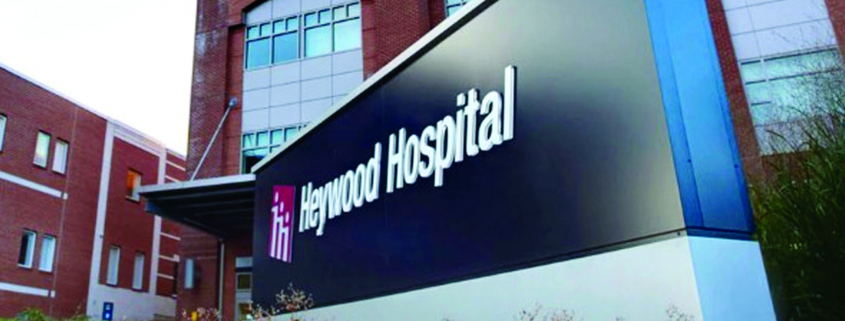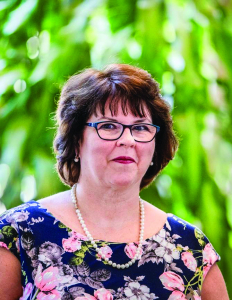On the frontlines of healthcare in North Central: A Perspective from the Region’s Leaders

Rozanna Penney, president and CEO, Heywood Hospital in Gardner
In January, the Worcester Business Journal announced its 2024 Economic Forecast, which focused on the future of several topics in Central Massachusetts but paid particular focus on the current health care landscape here in North Central. The publication forecasted that our region would see more challenges related to access to health care services, especially with our most vulnerable populations.
While it’s no surprise that our nation’s health care system is at a critical tipping point with staffing challenges, more demand and long wait times to obtain care, our region’s health care leaders are working diligently to combat the issues and find opportunities in the challenges while continuing to provide quality health care services to our communities.
Steve Roach, president, UMassMemorial Health—HealthAlliance Clinton Hospital, said he agrees with the WBJ’s forecast, but added this is not just an issue in North Central, but everywhere.
“Across health care, we have a workforce issue, from general hospital staff to nurses and tech aides, while also dealing with the challenges of finding physicians as many [physicians] have retired or moved on during the pandemic,” he said. “These staffing challenges then present a domino effect, which results in additional wait times for people to get seen or to be sent to nursing homes or other long-term care facilities from the hospitals. When this happens, there is a bigger delay and creates a backlog of the inpatient flow as patients in the emergency room wait to get a bed in the hospital.”
Rozanna Penney, president and CEO, Heywood Hospital in Gardner, agreed that bed capacity continues to be a challenge throughout the Commonwealth for medical as well as behavioral health patients.
“This is not unique to our region,” said Penney. “The only way we will be able to effectively make an impact in this crisis is by investing and growing strong community-based programs. North Central Massachusetts has a strong collaborative network of healthcare services and community-based programs with a focus on supporting those who are most marginalized, but more resources are needed.”
Penney said that through Heywood Hospital’s community engagement across schools and community partnerships, improved access and care coordination is how the hospital is focusing on the region’s most vulnerable youth and families. “School and community initiatives span across school-based acute care, behavioral healthcare, youth mentorship, trauma response, economic empowerment, access to healthy foods, diversity, equity and inclusion, financial literacy, and entrepreneurship. These services and programs are designed to equip youth and families for a healthy future.”
But staffing challenges are not just being experienced in hospitals. In fact, these challenges stretch across the entire health care system, including home care.
While Holly Chaffee, MSN, BSN, RN, president and CEO, Care Central VNA & Hospice, Inc., also agreed with the forecasted assessment, she said the managed care era has arrived, with 50 percent of Medicare beneficiaries enrolled in Medicare Advantage plans, as well as a severe working shortage of staff.
“Home health has been facing continual rate reductions, workforce shortages and increased regulatory scrutiny,” said Chaffee. “We do see an increased need for our services and there are multiple challenges.”
Chaffee said among the challenges is the current reimbursement landscape and the rise of the minimum wage, which results in lower wage workers moving into other industries.
“The most urgent concern [we have] is reimbursement of home health services by payer,” she said. “Our efforts with rate setting reform legislation here in Massachusetts can help to resolve these issues, while our efforts in [Washington, D.C.] regarding Medicare cuts and legislation can also help to resolve these concerns.”
Of the workforce shortages, she added, “Home health care is a 24-hour business and staff can move onto other jobs without having to work off-shifts while they make the same amount of money. While the lack of workforce remains a very big issue, the rates we are reimbursed for home health aide services do not cover the cost of care provided. So, as the wages were increased, the payers did not increase their rates to cover care.”
Just as home health is looking to find ways to solve the challenges, Roach, and his team at UMassMemorial Health, are doing the same.
“One major weakness in Massachusetts is the proliferation of urgent care centers that are not owned or operated by hospitals that don’t accept Medicaid,” he said. “As a hospital, we must treat everyone, but the private centers don’t have to accept Medicaid. It would be great if the state went back to these private urgent care centers and said they need to treat Medicaid patients to help us alleviate the strain on our emergency rooms.”
Despite the challenges across the industry, our region’s health care systems have taken great strides to remain strong, even if their decisions were not popular among the community.
 In 2023, UMassMemorial Health closed its labor and delivery unit, while Heywood Hospital announced its health care system filed for bankruptcy and stopped construction on the planned surgical pavilion.
In 2023, UMassMemorial Health closed its labor and delivery unit, while Heywood Hospital announced its health care system filed for bankruptcy and stopped construction on the planned surgical pavilion.
While Roach couldn’t specifically comment on the closing of the labor and delivery unit due to pending litigation, he said the hospital has committed to investing more than $600,000 to meet patient prenatal and postpartum needs, including providing curb-to-curb transportation around the clock.
“Our initial year contract was a little more expensive, but as we get up and running, the additional funding from the transportation plan will go toward providing additional programs to ensure people are getting to appointments, are connected to doulas and other things,” he said.
With the closing of the labor and delivery unit in Leominster, Heywood Hospital has noticed an incremental increase in obstetric (OB) patients, but Penney said the hospital has the capacity to accommodate more.
“We have been fortunate to hire some of the experienced OB nurses from HealthAlliance, have re-launched our doula program, and continue to recruit OB physicians” Penney added. “Patients who come to Heywood rave about the community hospital ‘feel.’ The LaChance Maternity Center at Heywood offers beautiful private rooms to comfortably accommodate moms and their partners, and our obstetric physicians and nurses are second to none.”
While Heywood Hospital is providing continued care for the region’s OB patients, financial stabilization of the hospital has been a priority over the last several months, which Penney said is essential in the hospital’s ability to continue to provide services to the community.
“We have recognized significant annualized improvements through the renegotiation of contracts with commercial payers, vendors, and lease terminations, and this would not have been possible without the protection under Chapter 11,” said Penney. “While we have consolidated certain service lines and underwent a reduction in force, we also maintained focus on ensuring that patients in the Greater Gardner and Athol areas do not lose access to care.”
Most recently, Heywood Hospital announced it will be reopening its inpatient Mental Health Unit, which was closed during the pandemic due to workforce challenges. Penney said the hospital also reaffirmed their commitment to providing regional maternity care and relaunched its doula services, while also launching a comprehensive transportation program to provide patients with a variety of non-emergency medical transportation options in partnership with Woods Ambulance. Plans for the surgical pavilion remain paused.
“We are very fortunate to have the support of our community and our dedicated medical staff and employees, who are the reason Heywood Healthcare continues to deliver high quality care, despite challenging circumstances,” she added.
Over at Care Central VNA & Hospice, Chaffee said the agency is working hard to provide quality care to as many people as possible. “There are limitations that hinder our ability to provide care, which are directly related to insufficient rates at a federal and state level,” she added. “These rates lag behind market rates which result in a home care agencies’ inability to compete with others in the health care sector.”
Chaffee pointed to a report released in June 2023 by the Massachusetts Health and Hospital Association which reported that 28 percent of the 1,057 patients waiting to be discharged from the 50 hospitals in Massachusetts were awaiting discharge to home health, an increase of 200 patients from the year before. “More than 38 percent of these patients reported they have been waiting for more than 30 days,” she added.
Continuum of care remains at the forefront of importance at UMass Memorial Health.
“We realize not every physician has appointments available ASAP, but we do work to get access to schedules to help maintain the continuum of care,” said Roach. “We are doing as well as we can, and having our EPIC system allows for improved communications across care teams, patients, and their families. In today’s health care environment, we realize families can be involved in the care of their parents, so by having these systems available provides caretakers the opportunity to see results to tests, appointments and more to help mom and dad.”
While our health care systems continue to pivot their respective services and programs to respond to the health care needs of our community, Roach said there is one thing we can all do that doesn’t cost money and could make a difference.
“The most important thing is that everyone needs to show compassion,” he said. “Our caregivers to show compassion to patients, our patients to show compassion to the caregivers. If we can all be a little bit nicer to each other across the board, we will come out with a better situation overall in our current health care environment.”




